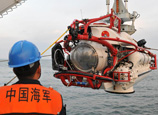
These projects could be price competitive with China's gas imports at current prices of liquefied natural gas, their report said.
The large volumes, if realized, could reduce China's demand for additional gas imports beyond currently secured purchase contracts before the end of the decade, analysts said.
Sinopec, for example, has recently announced plans to build two major gas pipelines with combined capacity of 60 billion cubic meters per year, for transporting synthetic gas from coal gasification projects from Xinjiang, the energy-rich region in China's far northwest, to the eastern provinces of Shandong, Zhejiang and Guangdong by 2016.
"Synthetic gas would effectively eliminate the market for additional gas imports before 2020," said Neil Beveridge, senior analyst at Bernstein, referring to piped gas from Russia and liquefied natural gas from elsewhere.
China's domestic gas production, plus currently contracted gas imports of 100 billion cubic meters, will reach 350 billion cubic meters by 2020. Demand is expected to reach 400 billion cubic meters.
Synthetic gas from coal gasification projects could provide 14 percent of China's gas demand by 2020, he said.
Coal-to-olefins projects, which are currently being explored to complement the traditional oil route in China, also appear to be economic at current oil and chemicals prices, analysts said. Olefins, such as ethylene and propylene, are used in the production of petrochemicals and polymers.
Coal-to-olefins could be China's strategic answer to cheap natural gas-based olefins in North America, analysts said.
















 Busiest line in Beijing: Subway line 10 has reached a daily transportation of 1 million passengers on average
Busiest line in Beijing: Subway line 10 has reached a daily transportation of 1 million passengers on average


![]()
